The Death of Champ: What Happened to the Lake Champlain Monster?
By John Dockum on 01/11/2010In the state of Vermont, a monster has gone missing. Not that I believe there ever was one, mind you. But once upon a time, here in the Green Mountain State the hearts and minds of the local people held fondly the image of a mysterious reptile with a long neck and a humped back who made occasional and usually unverified appearances to locals and tourists alike. We called him Champy, and his image was common along the banks of Lake Champlain. For over one hundred years the myth of the monster in the lake was adored by the people of Vermont, pondered by the tourists who came to visit, and watched for by interested investigators.
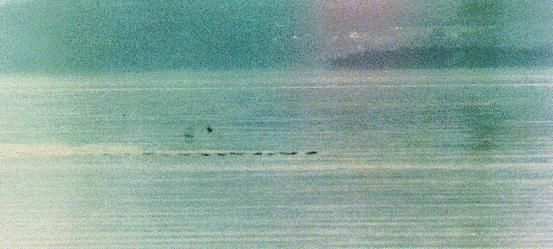
Then everything changed. The adored symbol of the lake and cryptic animal of the murky depths was chased away by a frenzy of media attention and profiteering. What the honest, salt of the earth, people of Vermont were left with was a tattered, exploited and laughable anecdote at best.
Since 1883, when the first sighting was actually recorded, tales of the monster seemed to occur every 25 years or so. The claims were nothing unusual, reptile with a long neck seen in the bay here, or a mysterious head poking out of the water over there. Sightings occurred on both sides of the lake and were often made by very reputable people within the local communities. Even when P.T. Barnum offered a $50,000 reward for the monster’s capture, the elusive beast was only seen on occasion and photographs were few and far between.
ADVERTISEMENT
That was, of course, until the specter of paranormal entertainment found out about our quaint little denizen of the deep. The subsequent extrusion of every dollar that Champy could offer morphed the legendary creature into the “pink elephant” of the cryptozoological world. No longer was Champ’s plausibility associated with the coelacanth, giant anacondas or even Sasquatch, it was now a ridiculous children’s tale to be ridiculed and scoffed at. Evidence and claims began to pour forth into the media, but the ridiculous claims of investigators and witnesses began to kill the reputation of the creature.
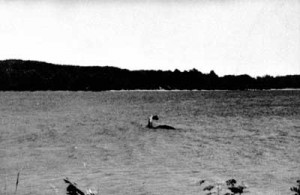 First in 1970, the ridiculous claim that the explorer Samuel de Champlain himself had seen the monster in 1609 while in the region surfaced in an article accompanying a sighting. This claim has since been proven false, but is still propagated by the mass media. The Mansi photograph, taken on July 5, 1977 was the most notable piece of evidence yet of the monster in the lake. It has been unable to be proven as a fake, yet it’s authenticity claim is tainted by the mysterious loss of the original negative immediately following its release. About the same time, the Lake Champlain Phenomena Investigation (LCPI) group spent almost the entirety of the 70s gathering reports and evidence of the reptile, finally disappearing more quietly than the monster they were chasing when repeated investigations turned up no conclusive evidence that Champ exists. Their final conclusion was that the beast must be nocturnal since they had not been able to observe it themselves. This was enough to get the States of Vermont and New York to pass protection legislation for the monster, ensuring that the creature could live long enough for everyone to get their money’s worth.
First in 1970, the ridiculous claim that the explorer Samuel de Champlain himself had seen the monster in 1609 while in the region surfaced in an article accompanying a sighting. This claim has since been proven false, but is still propagated by the mass media. The Mansi photograph, taken on July 5, 1977 was the most notable piece of evidence yet of the monster in the lake. It has been unable to be proven as a fake, yet it’s authenticity claim is tainted by the mysterious loss of the original negative immediately following its release. About the same time, the Lake Champlain Phenomena Investigation (LCPI) group spent almost the entirety of the 70s gathering reports and evidence of the reptile, finally disappearing more quietly than the monster they were chasing when repeated investigations turned up no conclusive evidence that Champ exists. Their final conclusion was that the beast must be nocturnal since they had not been able to observe it themselves. This was enough to get the States of Vermont and New York to pass protection legislation for the monster, ensuring that the creature could live long enough for everyone to get their money’s worth.
This frenzy grew into full, hour long features about the monster, the lure of which attracted all kinds of ridiculous people who were willing to make a sighting claim for their 15 minutes of fame. Now, I will admit that the people who claimed to see Champ the most often would appear to an outsider to be some unique folks. But here in the Green Mountains of Vermont, unique folks are a dime a dozen. This is the state where hippies and counter culture revivalists merge seamlessly into the quaint New England landscape. But now the claims began to change somehow. Each new story seemed more ridiculous than the first and reports of the creature were coming in every year. In 1993 15 vessels and aircraft towed huge arrays of equipment looking for the creature, returning nothing conclusive except for a sonar blip that indicated a 20 foot object had passed below one of the boats. Ignoring the possibility of a forested lake containing drifting logs and other debris, the media went nuts with the possibilities.
In response to the huge influx of reports resulting from the media frenzy, new groups of researchers began to appear. Most notably, Champquest, founded by Dennis Hall. Dennis Hall began mass marketing the search for the creature. He sent and made appeals to every paranormal or cryptozoological television show in existence. He became the face of the Lake Champlain Monster search, and he was looking to make a dollar or two while doing it. He published books about Champ, he appeared at festivals, and conventions. He published papers linking Champ to a species of extinct reptile called tanystropheus. This is quite the claim considering no image of champ ever showed more than a speck or two of the creatures alleged body. He began submitting copious hazy pictures of humps and bumps in the water. None of which showed anything resembling and actual animal. Hall claimed to have 20 or more sightings of Champ in the same location, yet was never able to produce more than a few dark, distant specks on the water’s surface in that time.
 When these claims failed to elicit the enthusiasm they once had, the story began to change. Suddenly, Hall claimed his father, in 1954, had cornered and photographed a 14 inch long mysterious reptile while swimming in the lake. The photograph was, of course, to be released for the first time in Hall’s upcoming book about the Lake Champlain Monster. To this date, the photo of the immature cryptid has not surfaced, and thankfully, neither has the overpriced book. The last stunt to be pulled by Mr. Hall was to convince the U-Haul company to add a picture of his version of Champ to one of the trucks in their fleet. The Champ fervor began to subside as other news agencies including ABC got involved. Their viewer submitted video pieces on Champ were quickly explained away as underwater logs or back-lit deer swimming across a small inlet.
When these claims failed to elicit the enthusiasm they once had, the story began to change. Suddenly, Hall claimed his father, in 1954, had cornered and photographed a 14 inch long mysterious reptile while swimming in the lake. The photograph was, of course, to be released for the first time in Hall’s upcoming book about the Lake Champlain Monster. To this date, the photo of the immature cryptid has not surfaced, and thankfully, neither has the overpriced book. The last stunt to be pulled by Mr. Hall was to convince the U-Haul company to add a picture of his version of Champ to one of the trucks in their fleet. The Champ fervor began to subside as other news agencies including ABC got involved. Their viewer submitted video pieces on Champ were quickly explained away as underwater logs or back-lit deer swimming across a small inlet.
And there, the monster known as Champy, ended it’s life as a respectable myth and mystery. All the money had been squeezed out, the links to Champ websites began to go untended. The Champquest site returns a 404 message and video links are not found. And now, when The Monster of Lake Champlain is mentioned around the campfire, gone is the image of a formidable and elusive beast, replaced by a logo or icon for t-shirts and tourist memorabilia; a cryptic reptile reduced to a plush toy by the activities of self promoters and the media.
I write these words to warn the people of the paranormal community. When the media and the producers come knocking on your door, turn them away. Tell them nothing of the places and legends that you hold dear to your heart. The ridiculous results of money making will kill their memory. Your hallowed halls will be hung by a staged tug on a jacket, your ancestors will be desecrated by an ill advised blood letting ceremony and your oral history will be erased by doctored photos and pseudoscience. A few friends of mine use the term “adventuring” rather than “investigating.” I think I agree with them. Let’s allow the mystery of the paranormal to stay what it is, because once Syfy, A&E or Discovery has their way with it, you will have nothing to pass on to your children.
MORE GREAT STORIES FROM WEEK IN WEIRD:

You may also like...
-
Advertisement
Subscribe for the latest Weird News Delivered Daily!
Join the world’s only mobile paranormal museum!
World’s Weirdest News in your Social Feed!
Latest Stories
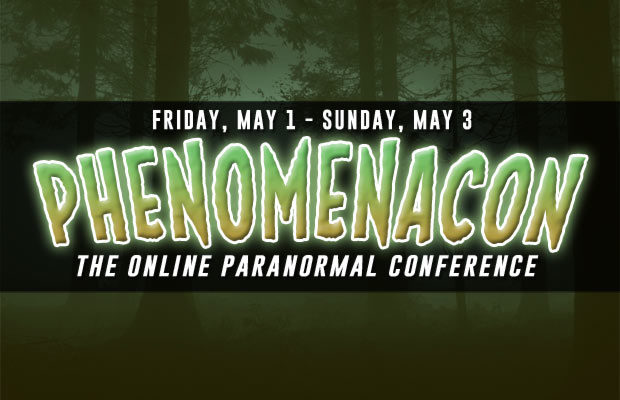
Phenomenacon: Attend the World’s First Online Paranormal Conference, Featuring Your Favorite Paranormal TV Stars
Martin Nelson | 04/22/2020With the onset of a global pandemic causing the shutdown of fan conventions all over the world, it was only a matter of time before the cancellations hit the...
18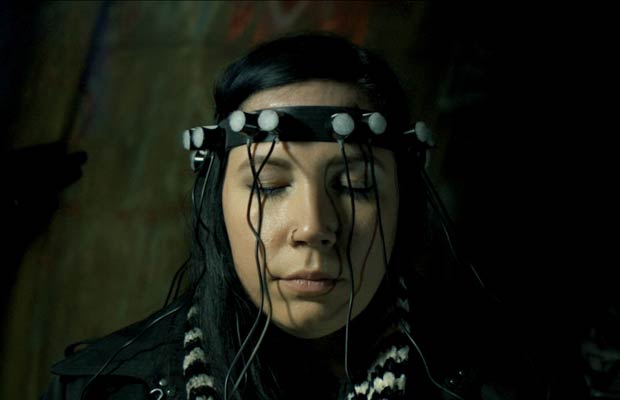
Groundbreaking Paranormal Documentary Series “Hellier” Returns with Ten Haunting Episodes of Appalachian Mystery
Martin Nelson | 11/28/2019There’s something strange moving through Kentucky like a virus, twisting through the Mammoth Cave system and hovering in the skies above the Appalachian Mountains. While might catch glimpses of...
18
Travel Channel’s “Haunted Salem: Live” Features the “Paranormal Dream-Team” in Live, Four-Hour Ghost Hunt
Martin Nelson | 09/27/2019Travel Channel is kicking off Halloween season on October 4th with a very special live event that brings together more of the network’s top paranormal stars than you can...
18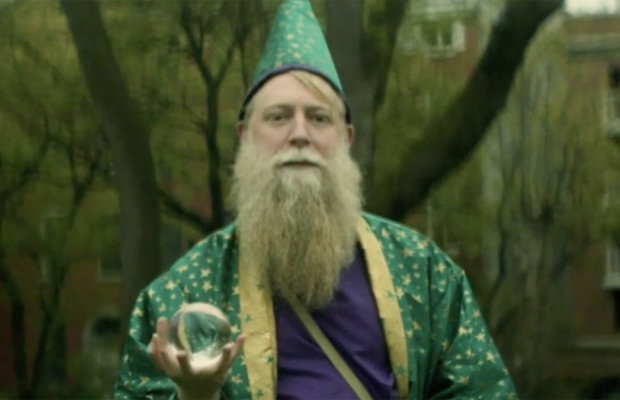
Meet Devin Person, a Real-Life Wizard Who Grants Wishes on the New York City Subway
Greg Newkirk | 06/11/2019For most of us, ignoring the strange people on the subway is second nature, but if you ever find yourself in the tunnels below New York City and you...
18Stories from Around the Internet
#PLANETWEIRD ON INSTAGRAM
About Week in Weird
Week In Weird is one of the web's most-visited destinations for all things weird, bringing you the latest fringe news, original articles featuring real investigations into unexplained phenomena, eyewitness reports of encounters with the anomalous, and interviews with notable figures in the fields of extra normal study.
Week In Weird is part of the Planet Weird family, brought to you by the paranormal adventures of Greg Newkirk and Dana Matthews, professional weirdos investigating the unexplained by engaging the strange.
- MORE ABOUT WEEK IN WEIRD
- REPORT A SIGHTING / CONTACT
- ADVERTISE WITH USFOLLOW PLANET WEIRD ON TWITTER
GREG & DANA: INVESTIGATING THE UNEXPLAINED
Content copyright © 2016 Planet Weird unless otherwise noted.


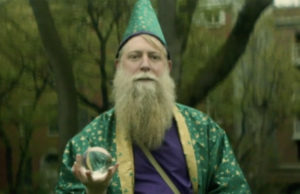



You must be logged in to post a comment Login